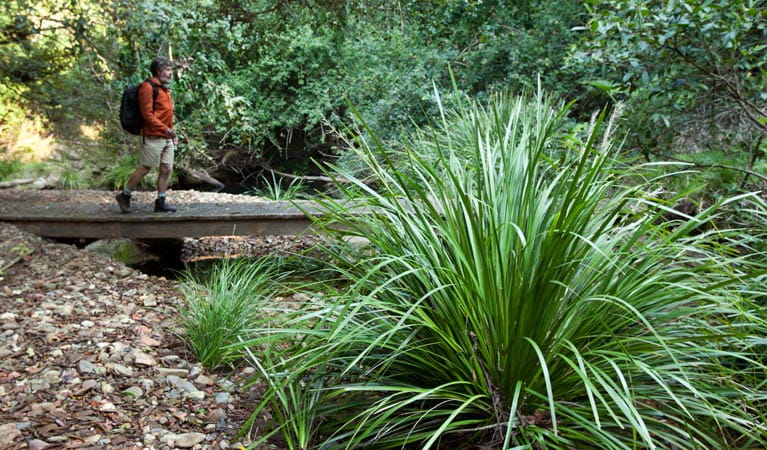Ngambaa Nature Reserve
Overview
Ngambaa Nature Reserve offers a retreat for animals and people alike, with areas of old-growth forest perfect for car touring, bushwalking, birdwatching, a family picnic and barbecue.
Read more about Ngambaa Nature Reserve
Of shared significance to the Aboriginal Dunghutti, Ngambaa and Gumbaynggirr People, Ngambaa Nature Reserve combines rich cultural heritage with a stunning rainforest environment. The coastal foothills are thick with old-growth grey gums, while red cedars sprout near tranquil creeks. There are broad dry open ridges and deep wet forests occupied by glossy black cockatoos. Indeed, the great diversity of trees makes Ngambaa a key habitat for flying animals, including the threatened powerful owl and yellow-bellied gliders.
Ngambaa may be remote, but its solitude will appeal to a certain type of traveller. Self-sufficient hikers will find much ground to chart, birdwatching enthusiasts will be in paradise, and those who enjoy car touring will appreciate the generous network of quiet roadways that thread through the area. There are places to cool down and unwind in the shade, and wood barbecues perfect for long lunches.
Keep your eyes peeled. With koalas and giant barred frogs living in the area, you never know what you might see in Ngambaa Nature Reserve.
Local alerts
For the latest updates on fires, closures and other alerts in this area, see https://www.nationalparks.nsw.gov.au/visit-a-park/parks/ngambaa-nature-reserve/local-alerts
Contact
- in the North Coast region
Ngambaa Nature Reserve is always open but may have to close at times due to poor weather or fire danger.
-
-
Coffs Harbour office
02 6652 0900
Contact hours: Monday to Friday, 8.30am to 4.30pm. - 4/32 Edgar St, Coffs Harbour NSW 2450
-
Email: npws.coffscoast@environment.nsw.gov.au
-
Coffs Harbour office
Visitor info
All the practical information you need to know about Ngambaa Nature Reserve.
Map
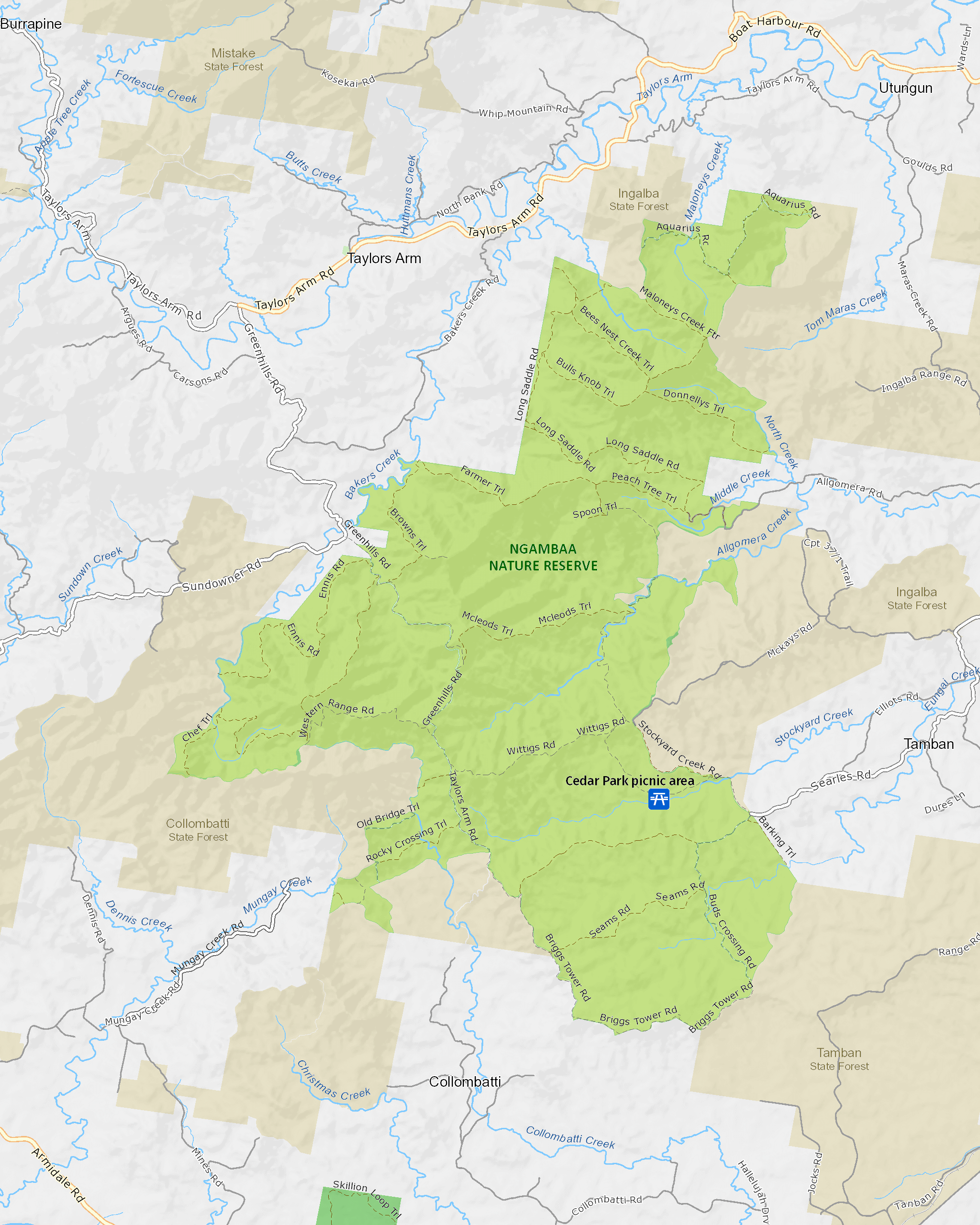
Map legend

Getting there and parking
Get driving directions
From Kempsey:
- Travel north on Pacific Highway to Fredrickton, then turn left onto Collombatti Road.
- Follow Collombatti Road, then Range Road, then Buds Crossing Road, which leads you into the reserve.
Parking
- Cedar Park picnic area See on map
By bike
Check out the Bicycle information for NSW website for more information
By public transport
Ngambaa Nature Reserve is not accessible by public transport.
Best times to visit
There are lots of great things waiting for you in Ngambaa Nature Reserve. Here are some of the highlights.
Autumn
Take binoculars in the short walk from Cedar Park picnic area, keeping your eyes open for native birds and koalas.
Spring
Take a scenic drive through the reserve, keeping an eye out for wildflowers.
Summer
Have a barbecue at Cedar Park picnic area, cooling your feet in Stockyard Creek.
Weather, temperature and rainfall
Summer temperature
Average
17.4°C and 28.8°C
Highest recorded
43°C
Winter temperature
Average
6.3°C and 20.3°C
Lowest recorded
-1.8°C
Rainfall
Wettest month
February and March
Driest month
September
The area’s highest recorded rainfall in one day
314.5mm
Facilities
Maps and downloads
Prohibited
Pets
Pets and domestic animals (other than certified assistance animals) are not permitted. Find out which regional parks allow dog walking and see the pets in parks policy for more information.
Smoking
NSW national parks are no smoking areas.
Nearby towns
Macksville (28 km)
Macksville is a relaxed fishing and oyster-farming town centre of a rich rural district. It's on low-lying land around the Nambucca River.
South West Rocks (44 km)
South West Rocks is a sleepy coastal retreat at its barefoot best. It's an oceanfront holiday town on north-facing Trial Bay.
Kempsey (49 km)
Kempsey is a historic river town close to national parks and majestic beaches. Kempsey is a convenient place for an overnight stop for anyone driving between Sydney and the North Coast.
Learn more
Ngambaa Nature Reserve is a special place. Here are just some of the reasons why:
Some powerful residents
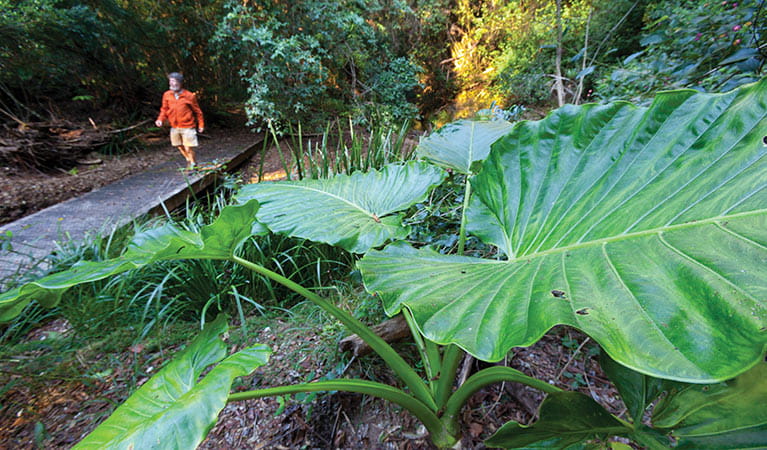
One example is the powerful owl, Australia's largest owl and an elusive predator. Ngambaa offers crucial habitat for these birds - they can survive only where large areas of forest provide nest sites and an extensive hunting range filled with possums and gliders. One breeding pair can command up to 1,000ha, which makes them very difficult to spot. Nevertheless, bring your camera just in case.
- Cedar Park picnic area Cedar Park picnic area offers an ideal base for exploring Ngambaa Nature Reserve, with picnic facilities and a walking track close to Kempsey.
Rolling coastal rainforest
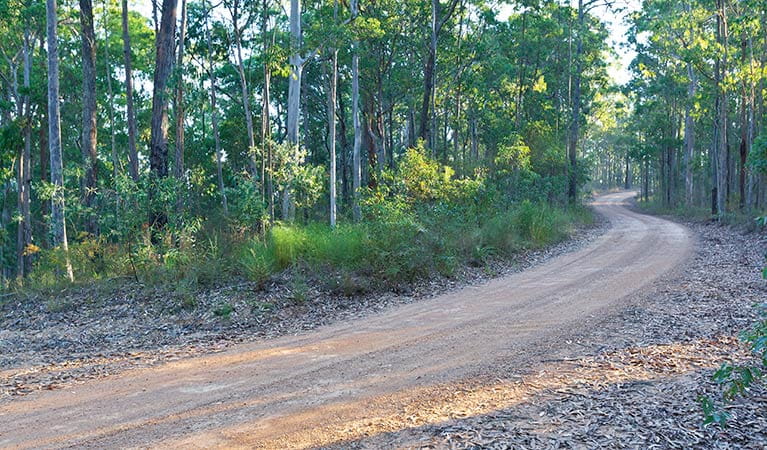
Ngambaa's coastal foothills include large areas of old-growth grey gum and spotted gum forest of significant conservation value. Not only does it have one of the highest ironbark diversities on record, it also provides forest connectivity from the coast to the hinterland to the escarpment. This is crucial for local wildlife.
Rich Aboriginal culture
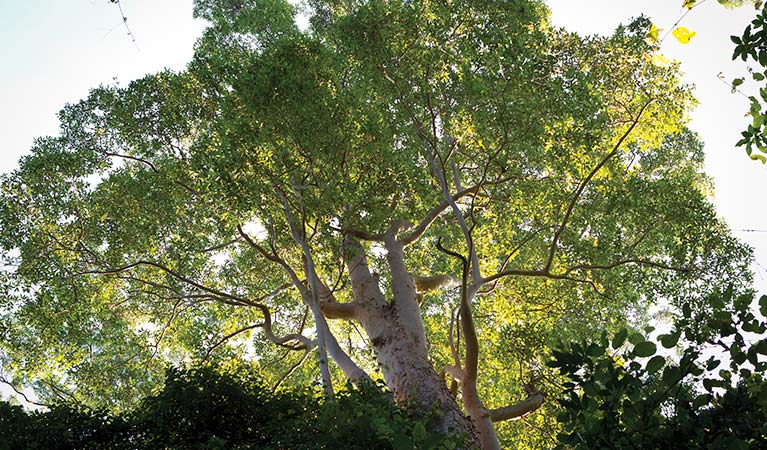
Local Aboriginal People have a significant cultural connection to sites in and around Nambucca Valley, and several parks and reserves have been named in recognition of this vital heritage. Ngambaa (pronounced 'num-bar'), means 'tribe that lived between nations', and is located on the boundary between the Gumbaynggirr and Dunghutti language groups. Historically, Aboriginal People found sustenance in the area and used it for ritual purposes; it continues to play an important role in the communities today. 'Our Aboriginal cultural heritage is alive and strong', say Gumbaynggirr Aboriginal Elders.
Education resources (1)
What we're doing
Ngambaa Nature Reserve has management strategies in place to protect and conserve the values of this park. Visit the OEH website for detailed park and fire management documents.

